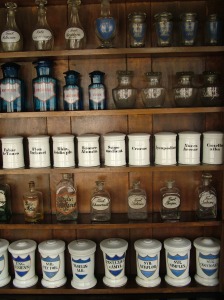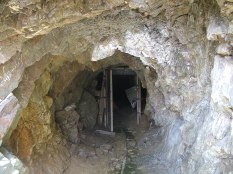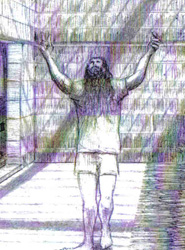A version of this story first appeared in the Toronto Star on March 30, 2011
The stone cottage stood alone on the hillside, dark and sinister in the gloom of twilight. Pushing open the heavy old door I shone my torch in to the empty silence of the room. A jet black wood burner stood in the hearth, and beside it a fresh woodpile. On a shelf, stacks of papers withered in the dampness alongside the baroque remains of a melted candle in a bottleneck.
I laid down my rucksack and collected some kindling. As the cold night drew in I piled the fire high, eating sausage and beans washed down with tea and, a little later, a few nips of whiskey from a hip flask.
I was miles from the nearest habitation, in the wilds of Northumberland, near England’s border with Scotland. In the musty interior of the old farm cottage it felt like I was further away, like I had slipped between the pages of a 19th century novel.
I wondered about the ghosts of the past: whose home this had been and when and why they had left. Outside in the deep of Keilder forest an owl hooted.
In the jam-packed Britain of today finding a place to enjoy the country’s heritage in true isolation is no mean feat. The land is scattered with ancient monuments – castles and churches, runes and ruins – but it’s also littered with fences, admission fees, “keep out” signs and lots of other visitors.
As a solution to this problem I heard about bothies. Dotted across northern Britain, they are ruined cottages abandoned to the elements. Often the former homes of shepherds and crofters, in Scotland many of
them are relics of the Highland Clearances, the forced displacement of the rural population carried out by the British government during the 18th and 19th centuries. One Highland bothy dating from the 18th century is the birthplace of the man whose life story formed the basis of Robert Louis Stevenson’s novel “Kidnapped”.
Another ruined farmstead at Kearvaig Bay on the northern tip of Britain contains a scrawled message on the plaster recording three generations of the same family dating back nearly 200 years.
They cost nothing to stay in, are left open all year round, and provide only the most basic shelter: a wooden platform to lay a sleeping bag on and a fireplace.
As well as the sense of history evoked by these buildings, there are good practical reasons for staying in them.
The countryside of northern England offers some of the best walking in Britain. The bucolic charms of the Lake District attract visitors from around the world, while to the east the windswept austerity of the Yorkshire moors and the wild, empty beaches of Northumberland are less known. However this being Britain, the great landscapes are not always
matched by great weather. Campouts under the stars transform to washouts in record time.
Since many of them are located close to walking trials, bothies are a good solution for trekkers who wanted to stay out on the hills without becoming a victim of our famously fickle climate.
With my appetite whetted by the online research I slung some supplies into a backpack and went ‘bothying’.
The first trip I made was to the cottage in Keilder. It was a bleak day, threatening rain overhead and below a carpet of snow still coated the wide forestry path that led through the woods.
Situated a few miles to the north of Hadrian’s Wall, the bothy makes an ideal stop-off for anyone attempting to walk the route of the 1,900 year-old ruins of the defence barrier the Roman leader constructed to define the northern limits of his empire.
Like many of the bothies, the cottage is maintained by volunteers from the Mountain Bothy Association (MBA). On its website the MBA asks that visitors help contribute to the upkeep of its buildings by observing a few basic rules – the “Bothy Code”.
At the Keilder forest site I found a guest book. One visitor, who signed himself “Smeagol” after the Lord of the Rings character, ranted about finding the place in a mess. Poor “Smeagol” complained he had walked eight miles in July heat only to find the place in a state of calamity. In a note peppered with expletives, he blamed a troupe of ne’er-do-wells he called the “air rifle muppet brigade” for flouting the code, and signed off promising never to return.
Most of the comments were more affirming: “’Spent the night by the fire with a cracking Chinese stir fry, good wine and beer. Tidied up and left some logs. Till next time.’ Signed Kev and Peter, March 21.”
After a fitful night’s sleep and fried breakfast, I collected some wood and left. On my way out I noticed a withered picture of a windswept Lakeland mountaintop hanging near the fireplace. Just such a place was to provide the backdrop for my next bothy experience.
The walk up to Warnscale Head starts in Buttermere in the southwest of the English Lake District. It skirts the edge of the pretty little lake, along the route of the Coast-to-Coast walk, until at the eastern shore it splits off and heads up the valley on to a scree-covered peak.
One of the best things about walking in England is the rich tapestry of language it reveals to you. Dialects that have long since dissolved into memory live on in the words for the land. In the Lakes for example, a hilltop can be variously a fell, pike or crag; a lake; a tarn or a mere. Reeling off the place names on a Lakeland map is an act of pure poetry. On my way up to the Bothy I passed (in order): Pike Rigg, Buttermere, Muddock Crags, Lambing Knott, Peggy’s Bridge and Warnscale Bottom.
The bothy is two-thirds up the mountain with incredible views back down the valley to Buttermere. The sun was shining the day I went and a waterfall, heavy with snowmelt, roared away to my left. In front of me the bothy — a ruined shelter for the workers who quarried shale here — was almost indistinguishable from the hillside. The same shale that it was made from scattered the ground around it.
I boiled a pan of water for tea and gazed from the bare interior to the extravagant view from the window. The valley sides looked lime green and burnt orange in the sunlight and the rocky heads of peaks like the chiselled faces of leviathans.
As I was leaving the house to drive over here my dad handed me a book to take. It was by Alfred Wainwright. If you’ve never heard of him, you should know that he is probably the best-known rambler of the English Lakes since William Wordsworth “wandered lonely as a cloud” here two centuries ago. A fugitive from a grim northern mill town,
Wainwright spent most his adult life here, producing a series of popular walking guides to the area. The guides are beautifully illustrated with the author’s own pen and ink drawings. It was Wainwright who came up with the Coast-to-Coast walk.
By chance the route to the bothy led on to Wainwright’s favourite peak: Haystacks. After a while I tore myself away from my shelter and continued the rest of the way up. The view from the top is breathtaking. Wainwright compared Haystacks to “a shaggy terrier in the company of foxhounds,” and sitting at the summit you feel the raw power of the black-faced, snow-flecked peaks that overlook you on all sides. Straight ahead the land falls away and sweeps, in one motion, to the lakeside. I sat for a while, buffeted by the wind, thinking how lucky I was that aside from the odd stray sheep grazing the uplands, I had the mountain to myself.
Two months after his death in 1991, Wainwright’s widow, Betty, following his wishes, carried the writer’s ashes up here and scattered them by Innominate Tarn, the lonely mountain lake that sits near the summit. It was an unusually cold winter in England this year and the tarn was still frozen over. But the thaw was setting in and when I stood by the water’s edge I heard the fizz and crack of melting ice.
“For a man trying to get a persistent worry out of his mind,” Wainwright wrote. “The top of Haystacks is a wonderful cure.” I watched a black bird dart over the tarn then disappear into clouds that were smoky through sunlight, seeing just what he meant.











